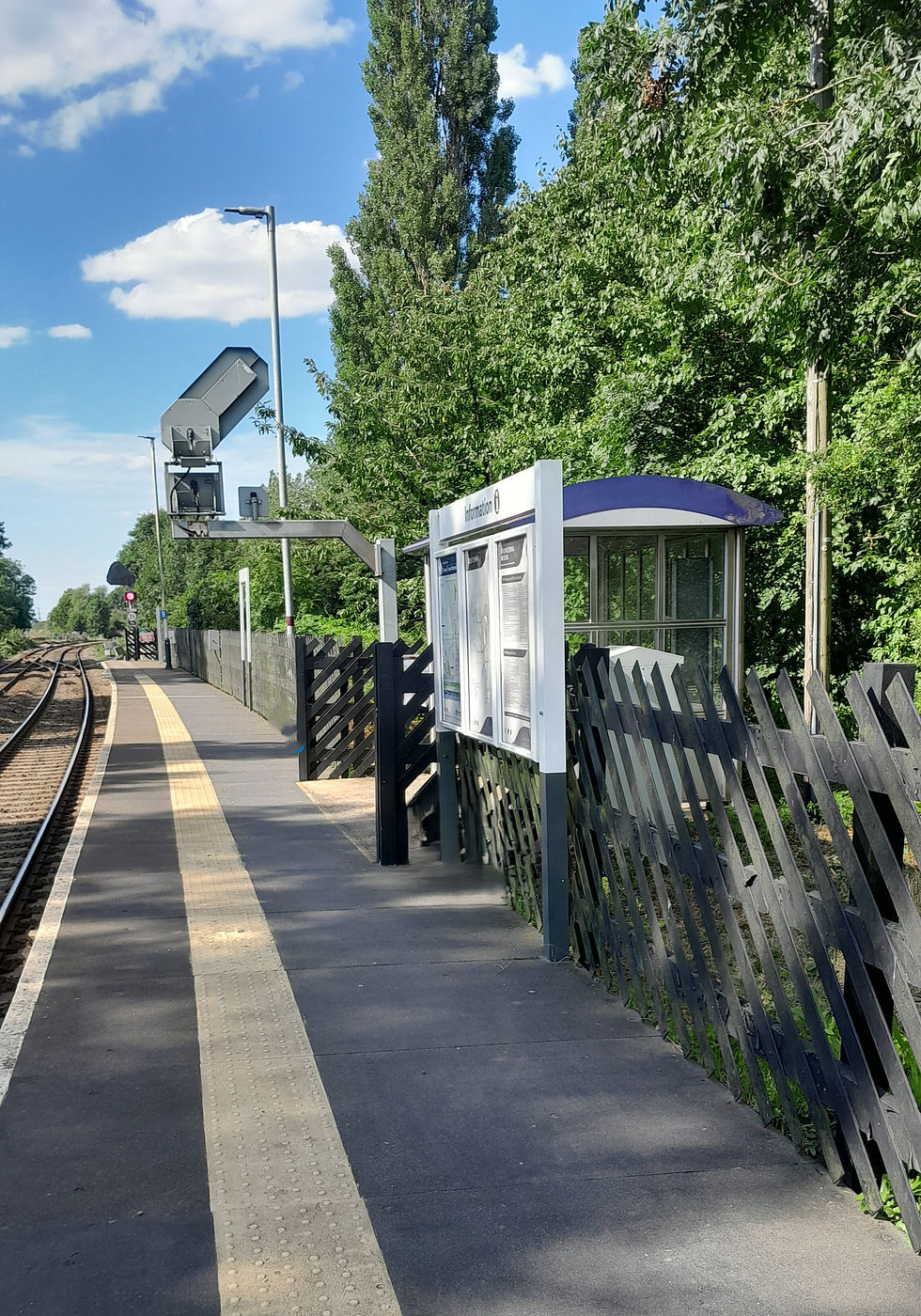The Route Line
LINE GUIDE
Barton is a historic town, close to the Humber Bridge. Barton has a variety of Georgian and Victorian buildings, two prominent churches, two nature reserves and a variety of shops, restaurants and accommodation.
The line leaves Barton and follows the Humber estuary through the villages of Barrow Haven and New Holland which boast excellent walking along the Humber before turning inland through picturesque countryside and reaching the pretty village of Goxhill and the nostalgic Thornton Abbey station. The imposing medieval gatehouse of Thornton Abbey stands east of the station and is presently under renovation - due for completion by 2028. On re-opening the grounds of the Augustinian ruins are a pleasant backdrop for a picnic.
The line then passes through Ulceby where the busy freight line to Immingham docks crosses. At Habrough it joins the mainline from Scunthorpe to Cleethorpes and passes through the villages of Stallingborough, Healing and Great Coates before entering the bustling town and fishing port of Grimsby.
Map of the Barton Cleethorpes line

SLIDE SHOW
A photographic record of the line taken in 1980 by Ronald Sparkes (copyright Ronald Sparkes)
The busy shopping centre of Grimsby has a good and varied selection of shops and attractions such as the renowned Fishing Heritage Centre and the Paddle Steamer ’Lincoln Castle’ formerly a ferry across the Humber from New Holland - Hull route.
The line then continues through New Clee and into the thriving North Sea beach resort of Cleethorpe. The station is on the promenade and very close to sandy beaches as well as a good selection of shops, restaurants and award winning fish and chip restaurants.
LINE HISTORY
A Brief History of the Line
The Barton to Cleethorpes railway line was opened by the Manchester, Sheffield & Lincolnshire Railway (MS&LR) in several stages between 1848 and 1863. The first stage opened in 1848 was between Grimsby and New Holland enabling a connection via a ferry across the river Humber to the city and port of Hull. The following year a 4 mile branch line was opened from New Holland to the town of Barton on Humber. In 1863 a further extension from Grimsby to Cleethorpes was added enabling through travel between Barton and Cleethorpes via New Holland. The MS&SR made major financial investment in the line providing port and pier facilities at New Holland, extensions to Grimsby Docks, and a major investment at Cleethorpes transforming a small fishing hamlet into a major seaside resort.
In the 1950s, like many railways throughout the country, the line started to feel the impact of road competition and goods and passenger traffic began to decline. Following the Beeching plan of 1963/64 the line was recommended for closure. However after consultation the line became exempt from closure mainly because of proposed industrial development of the area served by the line. The New Holland ferry also survived but did eventually close down with the opening of the Humber Bridge in 1981. Following the loss of the ferry the connection with Hull was maintained by a bus service from Barton. This service has remained ever since and has seen major improvement recently with a half-hourly service linking the towns of Scunthorpe and Barton with the city of Hull. The Stations along the line were all staffed until the late 1960s when all the staff was removed and Pay Trains were introduced, which still remain today. Eventually all the stations buildings were removed. The hourly train service on the line remained. However the service was cut back to two hourly in 1990. The all year Sunday service was also cut back to May to September. This remains today.



The following articles have been written by Ronald Sparkes (our vice-chair) and contain interesting historical information and photographs.
Further Line history about Grimsby railways (pdf 204kb)
Further Line history about Thornton Abbey station (pdf 209kb)
History of the Goxhill to Immingham docks branchline (pdf 65kb)
Information about Barton on Humber (pdf 64kb)
Information about Cleethorpes (pdf 134kb)
History of New Clee station (pdf 179kb)
History of Goxhill station (pdf 146kb)
History of Stallingborough (pdf 78kb)
The case of the missing driver (pdf 78kb)
The following website contains some
excellent historical pictures of the line.















